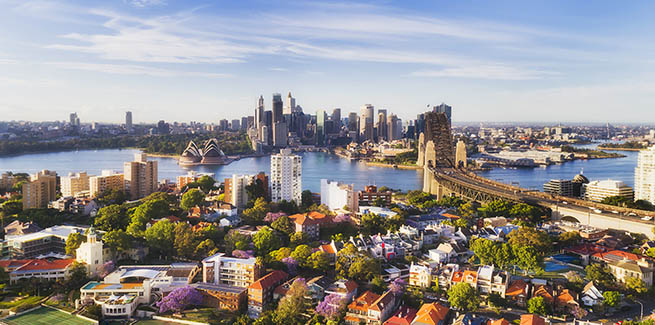As referenced in the data, this stark divide was observed across both Sydney and regional NSW at large.
According to the analysis, in the 20 years to March 2022, house prices increased by around 280 per cent. Comparatively, stamp duty lifted by 406 per cent over the same period.
Across regional NSW, the median house price grew by 324 per cent over this same period. However, stamp duty costs were reported as reaching 524 per cent across the two-decade stint.
“This demonstrates that stamp duty thresholds have not kept pace with house prices over time,” the report stated.
“Therefore stamp duty reform should be high on the agenda.”
The data also noted that the annualised wage growth of 3.4 per cent was less than half of the 7.3 per cent annual growth reported for houses across Sydney.
Domain analysis also noted that the threshold of stamp duty rates has not remained in line with the rate house prices have grown across NSW.
According to the data, 2.6 per cent of the houses in Sydney were paying a premium stamp duty rate, meaning that their property was valued at the time at $3 million.
However, in 2022, 10.4 per cent of home owners were paying a premium standard rate.
As of this week (16 June), houses valued at over $3.131 million are required to pay the premium stamp duty rate.
This three-year period also saw more houses qualify for the upper threshold of the standard rate, increasing from 43.6 per cent to 51.8 per cent, and a fall in the lower standard rate, dropping from 53.8 per cent in 2019 to now 37.9 per cent.
Regional NSW saw a similar pivot, with 2.8 per cent of owners meeting the upper standard rate in 2019. In 2022, this was 15.8 per cent.
Domain chief of research and economics, Dr Nicola Powell said these figures suggest that there is an opportunity for reform.
“Stamp duty is a major source of tax revenue for state governments but it is one of the least efficient taxes with huge economic and social costs,” Dr Powell said.
“Designing a successful tax system for New South Wales will significantly improve the accessibility of homeownership and reduce the friction of rightsizing our homes based on life stage.”
According to Domain, one potential direction could be a pivot to an annual property tax. As referenced in the analysis, an owner-occupier would have to pay an annual property tax for 18 years for that cost to match the upfront stamp duty required for a house valued at $1.5 million.
For investors, this would take six years.
“Stamp duty reduces property transactions due to the sizable lump sum and means people are less likely to live in a home that suits their needs,” Dr Powell added.
“This changes our life decisions, resulting in many people commuting for longer, not changing jobs, or living in a house unsuited to their lifestyle.”
Earlier this week, it was reported that the NSW state government would be moving to replace stamp duty with a land tax when it hands down its state budget 2022/23.
State Premier Dominic Perrottet said at the time that he believed that stamp duty is “the worst tax that any government can have”.
Earlier this year, Tasmania confirmed that it will be investing $1.5 billion in a 10-year housing package, which included lifting the stamp duty concession threshold.
[Related: Housing affordability continues downward spiral: REIA]
 ;
;